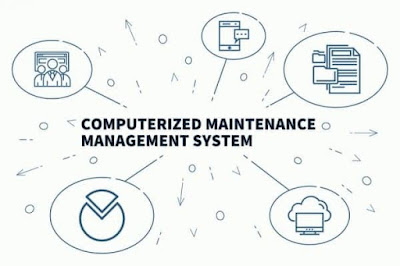Computerized Maintenance Management System (CMMS): Revolutionizing Asset Maintenance
 |
| Computerized Maintenance Management System |
With the rapid advancement in technology, industries are increasingly adopting computerized systems for various operations and functions to improve efficiency and reduce costs. Maintenance of physical assets is one such area where Computerized Maintenance Management System (CMMS) has brought tremendous benefits.
What is CMMS?
A CMMS refers to a software system that is used to manage maintenance
operations of physical assets in various industries and facilities. Some key
modules of a typical CMMS system include preventive maintenance scheduling,
work order management, inventory control of spare parts, and reporting of
maintenance data for analysis. CMMS automates and streamlines maintenance
workflows that were traditionally done manually through paperwork.
Benefits of CMMS
CMMS offers multiple tangible benefits over traditional manual maintenance
methods:
Improved asset availability: A Computerized
Maintenance Management System enables scheduling and tracking of all
preventive maintenance tasks which helps avoid unplanned breakdowns. This
improves overall equipment effectiveness and asset availability.
Cost savings: By automating workflows, a CMMS reduces manual labor hours spent
on administrative tasks. It also helps optimize spare parts inventory which
reduces related costs. Efficient scheduling of work saves downtime costs.
Data driven decision making: A CMMS captures vast amounts of equipment
maintenance data over time. Powerful reporting and analytics features help
maintenance managers discern asset reliability trends and identify repeat
issues. This helps take more informed decisions to reduce failure rates.
Enhanced safety and compliance: Features like work permits, safety inspections,
and calibration management help ensure maintenance tasks adhere to safety
protocols. This minimizes safety risks. Regulated maintenance tasks can be
easily scheduled as per compliance needs.
Better resource utilization: Labor hours and spare parts usage can be
accurately tracked to identify areas of over/under-utilization. Workloads can
be balanced accordingly to optimize workforce and inventory.
Real-time visibility and control: Managers can access real-time status of all
ongoing maintenance works and issues from any device due to mobile access. This
improves oversight, accountability and quick decision making.
Key Modules of a CMMS
Most modern CMMS solutions contain modules for:
Preventive Maintenance Scheduling: Schedule regular overhauls, inspections,
lubrications etc as per OEM protocols or internal SOPs.
Work Order Management: Create work orders for various maintenance jobs. Track
parts/labor usage, complete work and close work order.
Inventory Control: Maintain database of all spare parts including reorder
levels. Track spare parts usage, costs and optimize inventory.
Asset Management: Maintain master database of all assets/equipments with
details like purchase date, OEM details, warranties etc.
Calibration Management: Track instruments calibration schedules and
certificates to comply with quality standards.
Safety and Inspection: Schedule safety audits, permit to work systems and
inspection rounds. Track non-compliance issues.
Purchasing and Accounts: Interface with ERP for automatic parts
requisitioning,Generate POs, bills and track spending.
Reporting and Analytics: Powerful reporting on overall equipment effectiveness,
downtimes, mean time between failures, and more.
Mobile Access: View work orders, update status, capture signatures on the go
via mobile apps.
Integration Capabilities: Integrate with other systems like EAM, ERP, SCADA via
open API integration architecture.
Industry Applications of CMMS
CMMS has found widespread adoption across diverse industries due to flexibility
of applications:
Manufacturing Facilities: Huge asset base of production machines, conveyors,
robots etc. require an integrated CMMS for maintenance productivity.
Healthcare Industry: Critical equipment like MRI, X-Ray machines in hospitals
demand high uptime through systematic preventive maintenance by CMMS.
Fleet Management: Transportation companies use robust CMMS for buses, trucks,
emergency vehicles maintenance management and budgeting.
Oil and Gas Industry: Harsh conditions of offshore rigs and refineries make
remote asset monitoring by CMMS indispensable for safety critical tasks.
Utilities: Distribution stations, transmission towers electricity grids are
maintained efficiently through GIS integrated CMMS deployments.
Facilities Management: Buildings, campuses, shopping malls leverage CMMS to
coordinate maintenance operations and outsource AMC vendors.
Get More Insights on Computerized Maintenance Management System



Comments
Post a Comment